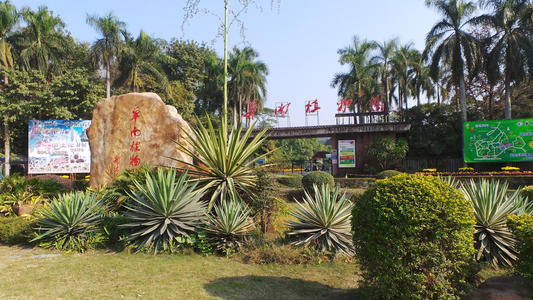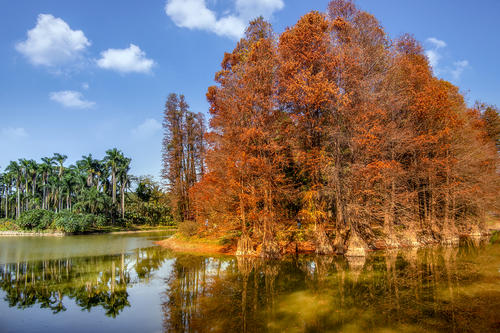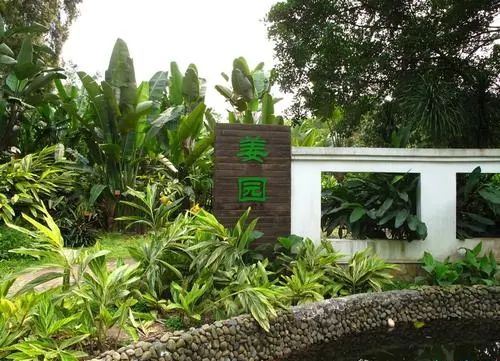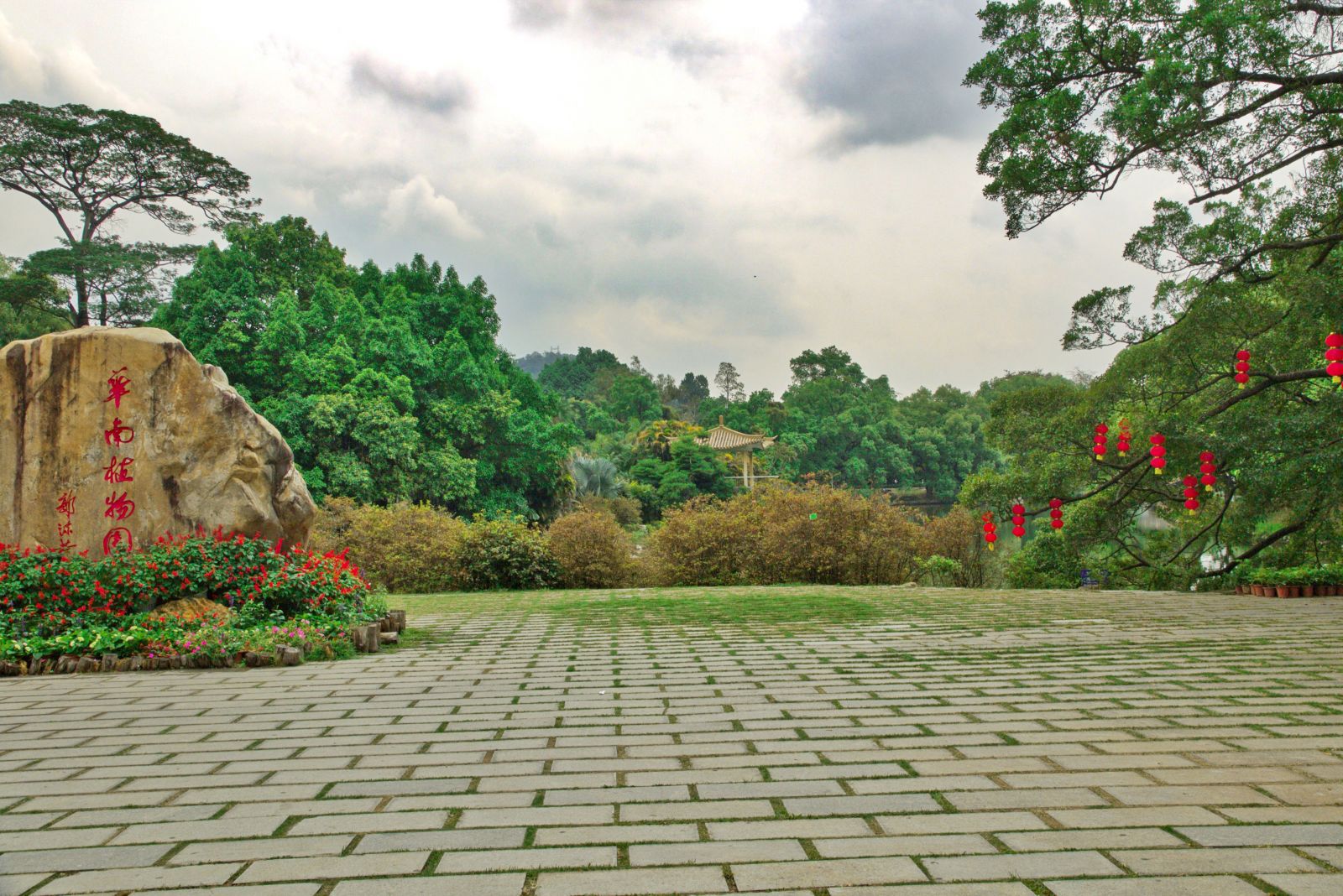Chinese Name: 华南植物园 Pronunciation: Huánán Zhíwùyuán
Building Time: 1929
Opening Hours: 7:30-17:30
Recommended Time for Visit: 2-3 Hours
Occupied Area: About 2.82 million square meters
Building Function: For botanical research and sightseeing
Address: No.723 Xingke Road, Tianhe District, Guangzhou, Guangdong Province, China
| Tickets | Price (yuan/person) | |
| Full-Price | Half-Price | |
| Garden Entry | 20 | 10 |
| Greenhouse Admission | 50 | 25 |
| Package Ticket | 50 | 25 |
1. Ticket Free (only Garden Entry): Children less than 1.2 meters in height and aged 6 or less than 6 with valid ID certificate; seniors aged 65 or above with valid ID certificate.
2. Half-Price ticket: children aged 6 to 18 years with valid identity cards or 1.2 - 1.5 meters in height; seniors aged 60-65 with valid ID certificate.

The South China Botanical Garden is one of the botanical gardens with the longest history, the largest number of preserved species, and the largest area in China. Adhering to the concept of “scientific connotation, artistic appearance, and cultural connotations”, the South China Botanical Garden integrates the functions of scientific research, species conservation, popular science education tourism and leisure.
The South China Botanical Garden is known as “the emerald of southern China”. There are 30 plant conservation parks, including magnolia garden, ginger garden, bamboo garden, orchid garden, palm garden, and cycad garden. They preserve more than 13,000 kinds of plants. In addition, there are a series of scientific research projects and achievements, which are highly praised by the public.
The South China Botanical Garden is a national tourist attraction of AAAA level attracting more than 1 million tourists annually. It is a leisure garden for popularizing botany and environmental science knowledge and ecotourism. It has been named “the National Youth Science and Technology Education Base”, “the National Popular Science Education Base” and “the Botany and Environment Education Base”.
The South China Botanical Garden, formerly known as the Institute of Agriculture and Forestry, Sun Yat-sen University, was founded in 1929 by renowned botanist Academician Chun Woon-Young (Chen Huanyong).
In 1954, the garden was transferred to the Chinese Academy of Sciences and renamed South China Institute of Botany.
In 1956, the South China Botanical Garden and the first nature reserve in China -- Dinghushan National Nature Reserve were established.
In October 2003, it was renamed South China Botanical Garden, Chinese Academy of Sciences (CAS).

The whole landscape of the scenic spot Long Dong Qi Lin is composed of two peninsulas and an artificial lake. Chinese cypress and sabino are planted along the banks of the lake. On one side of the lake, there are evergreen palm plants, and a tropical style of coconut palm grove; on the other side are sabino with different colors in different seasons, as a changing landscape. In 1986, the landscape was named as one of the “Eight Scenery of Guangzhou” and thus became the most representative scenic spot in the South China Botanical Garden.

Covering an area of about 73,000 square meters, the Ginger Garden protects and exhibits more than 250 species of plants belonging to 8 families of the ginger (Strelitziaceae, Musaceae, Lowiaceae, Heliconiaceae, Zingiberaceae, Costaceae, Marantaceae, Cannaceae). This garden of special collections has an important influence on similar international botanical gardens. In the garden, there are relief square, lotus shadow lake, and puzzle pavilion, which skillfully integrates science and art.
The beautiful environment and rich scientific connotation of the botanical garden not only attract tens of thousands of tourists, but also attract many state leaders and state guests to visit. Eight marshals of the ten founding fathers of China visited the botanical garden, among which marshals Zhu De and Ye Jianying personally planted green plum and kapok trees here. In addition, former Vice President Dong Biwu, the first Prime Minister of Singapore Lee Kuan Yew, King Sihanouk of Cambodia, and other state leaders and foreign guests also planted trees as memorials in the garden.
1. Please take care of the greenery and facilities. No picking of flowers and fruits. No climbing and carving of trees.
2. No smoking in non-smoking areas. No swimming in the lake.
3.Children, the elderly and people with disabilities must be accompanied by an adult.
Main Gate → Long Dong Qi Lin → Modern Exhibition Greenhouse → Azalea Garden → Science Education Center → Guangzhou First Village→ Ginger Garden → Magnolia Garden→ Science Popularization Center → Main Gate
Main Gate: Take bus B12, 30, 39, 83, 84, 345, 346, 494, 535, 534, 564, or 775 and get off at the Botanical Garden Front Gate Station.
West Gate: Take bus 775 and get off at the Botanical Garden West Gate station.
(Note: The North Gate is the main gate of the garden.)
Take Metro Line 6, get off at the Botanical Garden Station and exit A. Then walk westwards for about 350 meters to the main gate.
Chinese: 请带我去华南植物园。English: Please take me to the South China Botanical Garden.
Chinese: 请带我去华南植物园的正门。English: Please take me to the Main Gate of the South China Botanical Garden.
Chinese: 请带我去华南植物园的西门。English: Please take me to the West Gate of the South China Botanical Garden.
If you go to the South China Botanical Garden from the center of Guangzhou City (Four Seasons Hotel Guangzhou), it takes about 40 minutes (about 45 yuan).
If you go to the South China Botanical Garden from Guangzhou Baiyun International Airport, it takes about 1 hour (about 150 yuan).
If you go to the South China Botanical Garden from Guangzhou South Railway Station, it takes about 1 hour (about 130 yuan).
